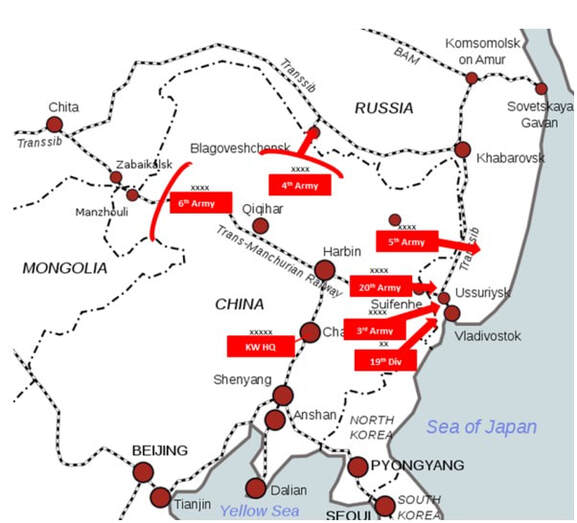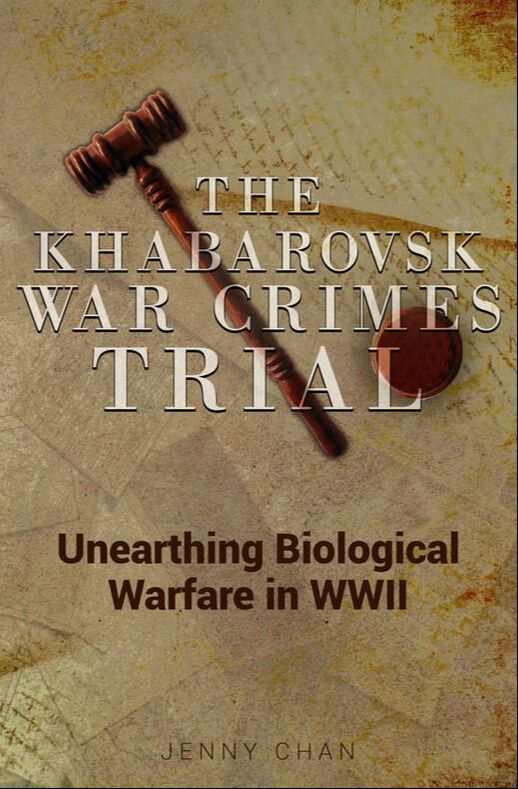- Home
- Stories
-
Internship
- Summer 2024 Internship
- Summer 2023 Internship
- Fall 2022 Internship
- Summer 2022 Internship
- Summer 2021 Internship
- Fall 2020- Spring 2021 Internship
- Summer 2020 Internship
- Fall 2019 Internship
- Summer 2019 Internship >
- School Year 2018-2019 Internship
- Summer 2018 Internship >
- Fall 2017 Internship
- Summer 2017 Internship >
- Books
- Archives
-
Resource Page
-
Supplementary Research Guides
>
- Unit 731 - Guide >
-
Philippines' Resistance - Guide
>
- Philippines World War II Timeline
- The Japanese Invasion & Conquest of the Philippines
- Bataan Death March
- Formation of Underground Philippines Resistance
- Supplies of the Guerrilla Fighters
- The Hukbalahap
- Hunter's ROTC
- Marking's Guerrillas
- United States Army Forces in the Philippines of Northern Luzon (USAFIP-NL)
- The Aetas
- Chinese and Filipino-Chinese Nationalist Guerrilla Units
- The Female Faces of the Philippine Guerrillas
- Rising Sun Flag - Guide >
- Pinay Guerrilleras - Guide >
- Fall of Singapore - Guide >
- Three Years and Eight Months - Guide >
- Siamese Sovereignty - Guide >
- The Khabarovsk War Crimes Trial - Guide >
- Unit 731 Cover-up : The Operation Paperclip of the East - Guide >
- Marutas of Unit 731 - Guide >
- Prince Konoe Memoir - Guide >
- Competing Empires in Burma - Guide >
- Battle of Shanghai - Guide >
- Ishi Shiro - Guide >
- Taiwan The Israel of the East - Guide >
- Seeking Justice for Biological Warfare Victims of Unit 731 - Guide >
- Rice and Revolution - Guide >
- Clash of Empires - Guide >
-
Hunger for Power and Self-SufficiencyI - Guide
>
- The Influence of War Rations on Post-War Culinary Transformations
- How World War II Complicated Food Scarcity and Invention
- American Military Innovations
- Government-Sponsored Food Inventions in Europe during World War II
- Feeding the Army: The Adaptation of Japanese Military Cuisine and Its Impact on the Philippines
- Mixed Dishes: Culinary Innovations Driven by Necessity and Food Scarcity
-
Denial A Quick Look of History of Comfort Women and Present Days’ Complication - Guide
>
- The Comfort Women System and the Fight for Recognition
- The Role of Activism and International Pressure
- The Controversy over Japanese History Textbooks
- The Sonyŏsang Statue and the Symbolism of Public Memorials
- Activism and Support from Japanese Citizens
- The Future of Comfort Women Memorials and Education
- Echoes of Empire: The Power of Japanese Propaganda - Guide >
- Lesson Plans >
-
Supplementary Research Guides
>
USSR
|
KANTOKUEN, short for Kantogun Tokubetsu Enshu, which referred to Kwangtung Army Special Maneuvers, was an operational plan created by the Imperial Japanese Army. It was a plan to invade and occupy the far eastern region of the Soviet Union. The Imperial Japanese Army saw an opportunity after Nazi Germany’s attack of the Soviet Union to conquer it as well. It was the most exten sive Japanese military plan. Part of the plan was to employ the heavy use of the chemical and biological weapons and to include seven Japanese armies to conquer the Soviet Union. According to the plan, the Imperial Japanese Army could defeat and destroy the Soviet Union within six months. |
|
|
However, Japan also needed to plan for its Southeast Asia attack, and the Japanese realized that Nazi Germany was not going to win Europe anytime soon, so decided to cancel the KANTOKUEN plan by September of 1941. However, they were set on their vision of employing biological weapons against the Soviet Union.
During an interrogation on December 6th, 1949, Zensaku confessed, “Being a veterinary surgeon, as a researcher, first in the 1st Section of the 2nd Division of the detachment, and later in the 6th Section of the same division formed in December 1943, I studied the action of glanders and anthrax germs, engaged in the breeding of these germs, and took part in devising all sorts of methods of using these germs in bacteriological warfare. For this purpose, in July-August 1942, I took part in an expedition, called ‘summer maneuvers,’ in the area of Tryokhrechye. The object of this expedition was to investigate the possibility of using anthrax and glanders germs under natural conditions approximating those in the area of anticipated hostilities—on the frontier of the Soviet Union. During this expedition, experiments were made in contaminating the river Derbul and water sources with glanders, and the soil and grass surface with anthrax. The germs for this purpose were cultivated in a field laboratory and tested on horses, sheep and guinea pigs. From June 1944 onwards, I was with a group of researchers from Detachment 100 in North Khingan Province and, on the orders of the Command of the Kwantung Army, conducted reconnoitring operations for the purpose of gaining information on the whereabouts and number of cattle belonging to the inhabitants of the districts bordering on the Soviet Union and the Mongolian People’s Republic, on the condition of these cattle, the whereabouts of summer and winter pastures and hayfields, and the condition of the roads and water sources. The Japanese Command needed this information in order, in the event of war against the Soviet Union, to carry out the wholesale infection of cattle as a means of bacteriological sabotage. As the Imperial Japanese soldiers were retreating in Central China, Unit 731 launched an expedition. As Karasawa testified about preparing for the expedition, “... An expedition against the Chinese troops was carried out in the middle of 1942, with General Ishii in charge. ... As a preliminary to this expedition, 130 kilograms of paratyphoid and anthrax bacteria were prepared under my direction, again on the orders of Major Suzuki. According to my information, fleas were also used as epidemic carriers in this expedition. ... To carry out the expedition, General Ishii left with a party for Central China, where the Japanese troops were retreating at that time. The members of the expedition took advantage of the retreat to disseminate bacteria in the abandoned territory in order to cause outbreaks of epidemic among the advancing Chinese troops.” |
The Khabarovsk War Crimes Trial:
|
|
Phibun's Policies
|
Postwar Aftermath
|
|
Pacific Atrocities Education
730 Commercial Street San Francisco, CA 94108 415-988-9889 |
Copyright © 2021 Pacific Atrocities Education.
We are a registered 501 (c)(3) charity. |
- Home
- Stories
-
Internship
- Summer 2024 Internship
- Summer 2023 Internship
- Fall 2022 Internship
- Summer 2022 Internship
- Summer 2021 Internship
- Fall 2020- Spring 2021 Internship
- Summer 2020 Internship
- Fall 2019 Internship
- Summer 2019 Internship >
- School Year 2018-2019 Internship
- Summer 2018 Internship >
- Fall 2017 Internship
- Summer 2017 Internship >
- Books
- Archives
-
Resource Page
-
Supplementary Research Guides
>
- Unit 731 - Guide >
-
Philippines' Resistance - Guide
>
- Philippines World War II Timeline
- The Japanese Invasion & Conquest of the Philippines
- Bataan Death March
- Formation of Underground Philippines Resistance
- Supplies of the Guerrilla Fighters
- The Hukbalahap
- Hunter's ROTC
- Marking's Guerrillas
- United States Army Forces in the Philippines of Northern Luzon (USAFIP-NL)
- The Aetas
- Chinese and Filipino-Chinese Nationalist Guerrilla Units
- The Female Faces of the Philippine Guerrillas
- Rising Sun Flag - Guide >
- Pinay Guerrilleras - Guide >
- Fall of Singapore - Guide >
- Three Years and Eight Months - Guide >
- Siamese Sovereignty - Guide >
- The Khabarovsk War Crimes Trial - Guide >
- Unit 731 Cover-up : The Operation Paperclip of the East - Guide >
- Marutas of Unit 731 - Guide >
- Prince Konoe Memoir - Guide >
- Competing Empires in Burma - Guide >
- Battle of Shanghai - Guide >
- Ishi Shiro - Guide >
- Taiwan The Israel of the East - Guide >
- Seeking Justice for Biological Warfare Victims of Unit 731 - Guide >
- Rice and Revolution - Guide >
- Clash of Empires - Guide >
-
Hunger for Power and Self-SufficiencyI - Guide
>
- The Influence of War Rations on Post-War Culinary Transformations
- How World War II Complicated Food Scarcity and Invention
- American Military Innovations
- Government-Sponsored Food Inventions in Europe during World War II
- Feeding the Army: The Adaptation of Japanese Military Cuisine and Its Impact on the Philippines
- Mixed Dishes: Culinary Innovations Driven by Necessity and Food Scarcity
-
Denial A Quick Look of History of Comfort Women and Present Days’ Complication - Guide
>
- The Comfort Women System and the Fight for Recognition
- The Role of Activism and International Pressure
- The Controversy over Japanese History Textbooks
- The Sonyŏsang Statue and the Symbolism of Public Memorials
- Activism and Support from Japanese Citizens
- The Future of Comfort Women Memorials and Education
- Echoes of Empire: The Power of Japanese Propaganda - Guide >
- Lesson Plans >
-
Supplementary Research Guides
>



